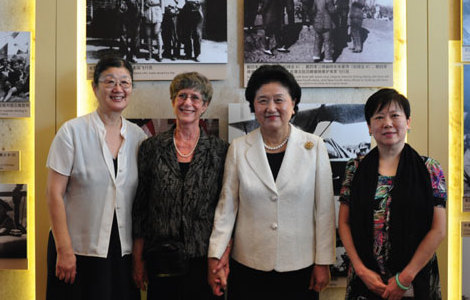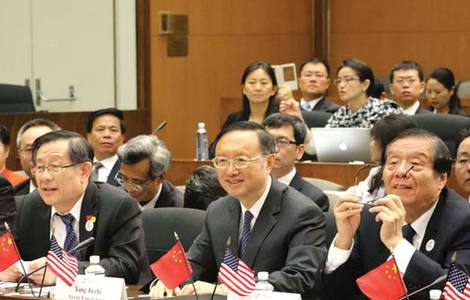Lessons should be learned from Tianzifang
Updated: 2015-06-26 14:13
By Li Yang in Beijing(China Daily)
|
||||||||
Tianzifang is a street market in Shanghai fashioned for tourists out of an old Shikumen-style housing complex that features two wings of identical buildings along a narrow alley enclosed by tall stone gates at both ends.
But the renovation and over-commercialization of Tianzifang, as many people believe, does not allow tourists to experience the real local community culture of Shanghai.
Shikumen, initially developed by foreigners for refugees from Jiangsu and Zhejiang provinces escaping a farmers' rebellion in the mid 19th century in East China, housed 60 percent of Shanghai's population at its peak before the city government's large-scale renovation project in the 1990s. The narrow living space holding many families of different generations formed a special community culture of Shanghai.
Locating in such an old neighborhood is an important characteristic of Tianzifang. But some tourists feel disappointed with it, because except the buildings, everything there is not relevant to Shanghai. The market is filled with petty commodities made in Yiwu, Zhejiang province, snacks and sellers from across the country.
"I do not think I am in Shanghai while strolling in Tianzifang. Shanghai needs to make it more representative of local culture," a tourist from Fujian province told local media.
Governments in many Chinese cities have developed such historical places for tourists. The central authority supports the development of cultural industry, tourism and service sectors.
Local governments regard the old road tourist spot as ideal project overlapping the three areas. But the government should draw some lessons from the tourists' disappointments with Tianzifang.
If the original residents are pushed out from the old streets, the constructions will die as an integral part of cultural entity, which is enlivened by their native inhabitants. The government should seek a balance between maintaining the old lifestyle of the residents and the commercial development of their communities.
Second, the development of such a project as Tianzifang should benefit local residents, who should have a say on many important matters concerning the project, such as what kinds of businesses should be introduced to the market, and whether the decoration and renovation of some buildings are in line with requirements of not only construction safety but also protection of the historical buildings.
The government should organize hearings seeking local residents' suggestion, and there should be a negotiation mechanism to strike the balance between protection and development.
The commodities sold in the lane market should be related to local people and their life, otherwise an old street market in Shanghai becomes a dull souvenir shop.
Western culture plays an important role in Shanghai, and melds with local culture gradually, as it has done over the past 200 years. Shikumen is a mixed genre of architecture of the Western and Chinese styles.
The government should do more to explore Western culture's roots in Shikumen and make it more tourist-friendly for foreign visitors, which is beyond the ability of local residents.
The authority needs to pay more attention to improve the conditions of public hygiene and convenience for residents and tourists. An urgent need of Shikumen areas is to have more clean and comfortable toilets.
liyang@chinadaily.com.cn
Most Viewed
Editor's Picks

|

|

|

|

|

|
Today's Top News
China opposes US defense bill
No rest until sweeping victory against drugs, President Xi says
More people around world like China, survey finds
Victims of Charleston massacre mourned
US police fatally shoot unarmed black man in domestic dispute
Pundits cheer China-US talks
US Supreme Court upholds key Obamacare insurance subsidies
Productive talks praised
US Weekly

|

|














